结论:Galaxy Tab S10 Ultra 的优点与若干缺点
总的来说,三星Galaxy Tab S10 FE+ 是一款尺寸大、电池续航时间长、外形美观的平板电脑。这些特点与多功能 S Pen 相结合,使其成为大学或学校的有趣伴侣。IP 防护等级还可确保防水防尘,从而提高了外出时的耐用性。
不过,Galaxy Tab S10 Fe+ 也并非没有一些值得注意的地方。最大的批评点是三星平板电脑的性能,它并不完全令人信服。对于那些期望 Tab S10 FE+ 的价格具有较高系统性能的用户来说,这可能是一个决定性的淘汰标准。
就售价而言,该产品在功能方面的其他不足还包括充电速度慢或仅有一个 USB 2.0 端口。
尽管如此,Galaxy Tab S10 FE+ 上市后不久就出现了大幅降价,现在这款平板电脑的价格不到 600 欧元或 600 美元。
如果您正在寻找替代产品,Oppo Pad 4 Pro 是一个强有力的竞争者,也是一款整体性能更好的平板电脑。
Pros
Cons
价格和供应情况
三星Galaxy Tab S10 FE+ Wi-Fi 版在德国亚马逊(Amazon.de)或直接从制造商处购买,零售价为 749 欧元。如果您需要 5G 蜂窝连接,则需支付 100 欧元的附加费。
该平板电脑的测试配置也可从美国亚马逊购买,售价为 599.99 美元。
Table of Contents
- 结论:Galaxy Tab S10 Ultra 的优点与若干缺点
- 三星Galaxy Tab S10 FE+ 的规格
- 外壳高质量 IP68 防护等级
- 功能:Android 大型平板电脑的 USB 2.0 功能令人失望
- 软件: Galaxy Tab S10 FE+ 长期更新
- 通信和全球导航卫星系统:可选 5G,但无 Wi-Fi 7
- 摄像头 Galaxy Tab S10 FE+ 配备 1300 万像素后置单摄像头
- 配件和保修:包装盒内无电源适配器
- 输入设备和操作:S Pen 和电源按钮上的指纹传感器
- 显示屏:90 Hz LCD,无 PWM
- 性能Exynos 1580 难以跟上竞争对手的步伐
- 排放:未观察到明显的节流现象
- 能源消耗:整体效率低,充电速度慢
- Notebookcheck 对三星Galaxy Tab S10 FE+ 的总体印象
- Potential competitors in comparison
三星Galaxy Tab S10 FE+ 的显示屏尺寸为 13.1 英寸,是迄今为止Galaxy Tab S FE 系列中最大的显示屏;它比 Galaxy Tab S9 FE+大 0.7 英寸。
三星表示,与 S Pen 相结合,Tab S10 FE+ 有可能成为学校的终极学习伙伴和智能学习伴侣。
除了大屏幕之外,Galaxy Tab S10 Fe+ 的人工智能功能也给人留下了深刻印象,这些功能旨在简化学生和休闲用户的生活。
三星Galaxy Tab S10 FE+ 的规格
外壳高质量 IP68 防护等级
» Notebookcheck多媒体笔记本电脑Top 10排名
» Notebookcheck游戏笔记本电脑Top 10排名
» Notebookcheck低价办公/商务笔记本电脑Top 10排名
» Notebookcheck高端办公/商务笔记本电脑Top 10排名
» Notebookcheck工作站笔记本电脑Top 10排名
» Notebookcheck亚笔记本电脑Top 10排名
» Notebookcheck超级本产品Top 10排名
» Notebookcheck变形本产品Top 10排名
» Notebookcheck平板电脑Top 10排名
» Notebookcheck智能手机Top 10排名
» Notebookcheck评测过最出色的笔记本电脑屏幕
» Notebookcheck售价500欧元以下笔记本电脑Top 10排名
» Notebookcheck售价300欧元以下笔记本电脑Top 10排名
功能:Android 大型平板电脑的 USB 2.0 功能令人失望
与 Galaxy Tab S10+Tab S10 FE+ 只提供一个 USB 2.0 端口,这意味着虽然支持 USB OTG,但无法与显示器进行有线连接。
在测试过程中,我们使用三星 980 Pro(M.2 固态硬盘)的传输速度仅为 36 MB/s。连接的存储介质可以格式化为 NTFS(只读模式)或 exFAT,以便顺利使用。
Galaxy Tab S10 FE+ 没有配备 NFC,但据制造商称,它提供了三星的安全平台 Knox,可以保护用户的敏感信息。
microSD 读卡器
结合我们的 Angelbird V60 参考卡,Tab S10 FE+ 可提供稳定的复制速度,尽管 Tab S10+的表现要好得多。在 CPDT 基准测试中,Tab S10 FE+ 的 microSD 性能更好。
| SD Card Reader - average JPG Copy Test (av. of 3 runs) | |
| Samsung Galaxy Tab S10+ (Angelbird AV Pro V60) | |
| Average of class Tablet (10.2 - 57.4, n=51, last 2 years) | |
| Samsung Galaxy Tab S10 FE+ (Angelbird AV Pro V60) | |
Cross Platform Disk Test (CPDT)
软件: Galaxy Tab S10 FE+ 长期更新
可持续性
由于Galaxy Tab S10 FE+ 尚未列入三星的可持续发展报告,因此无法获得有关该产品的具体信息。
与 Galaxy Tab S10+类似,制造商可能也使用了由可回收材料制成的部件。包装由纸张制成。
通信和全球导航卫星系统:可选 5G,但无 Wi-Fi 7
Galaxy Tab S10 FE+ 只提供 Wi-Fi 6 连接,而不是更先进的 Wi-Fi 7,这意味着无法使用 6 GHz 频段实现更高的传输速度。
我们使用华硕 ROG Rapture GT-AXE11000 路由器在 5 GHz 频段上实现了约 800 Mb/s的传输速度,还算不错。
除了 Wi-Fi 版本,三星还为Galaxy Tab S10 FE+ 提供了 5G SKU。后者可以将 nanoSIM 卡与 eSIM 卡结合使用。这两款机型都可以进行位置跟踪。
| Networking | |
| Samsung Galaxy Tab S10 FE+ | |
| iperf3 transmit AXE11000 | |
| iperf3 receive AXE11000 | |
| Oppo Pad 4 Pro | |
| iperf3 transmit AXE11000 | |
| iperf3 receive AXE11000 | |
| Samsung Galaxy Tab S10+ | |
| iperf3 transmit AXE11000 | |
| iperf3 receive AXE11000 | |
| iperf3 transmit AXE11000 6GHz | |
| iperf3 receive AXE11000 6GHz | |
| Lenovo Yoga Tab Plus | |
| iperf3 transmit AXE11000 6GHz | |
| iperf3 receive AXE11000 6GHz | |
| Average 802.11 a/b/g/n/ac/ax | |
| iperf3 transmit AXE11000 | |
| iperf3 receive AXE11000 | |
| iperf3 transmit AXE11000 6GHz | |
| iperf3 receive AXE11000 6GHz | |
| Average of class Tablet | |
| iperf3 transmit AXE11000 | |
| iperf3 receive AXE11000 | |
| iperf3 transmit AXE11000 6GHz | |
| iperf3 receive AXE11000 6GHz | |
摄像头 Galaxy Tab S10 FE+ 配备 1300 万像素后置单摄像头
Image comparison
Choose a scene and navigate within the first image. One click changes the position on touchscreens. One click on the zoomed-in image opens the original in a new window. The first image shows the scaled photograph of the test device.
Main CameraMain CameraLow light5x Zoom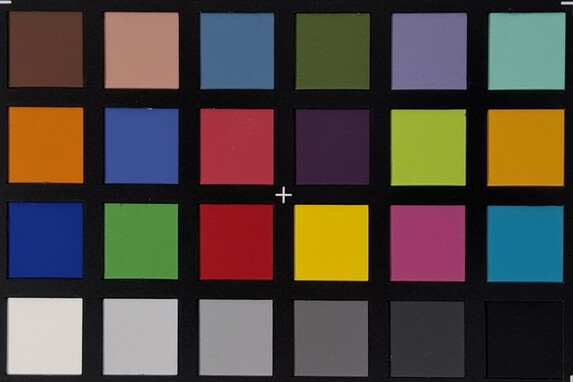
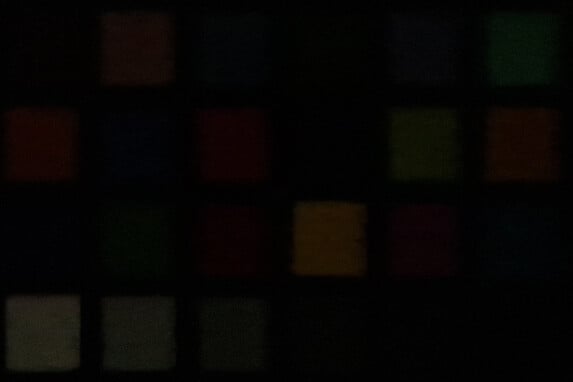
配件和保修:包装盒内无电源适配器
Galaxy Tab S10 FE+ 随附 S Pen 和 USB 数据线。配套的电源适配器、Book Cover Keyboard 和 Book Cover Keyboard Slim 或 Slim Cover 可在三星网上商店单独购买。
三星提供 保修Galaxy Tab S10 FE+ 的保修期为 24 个月,还可以购买 Care+ 保险套餐,价格为 129 欧元。
输入设备和操作:S Pen 和电源按钮上的指纹传感器
显示屏:90 Hz LCD,无 PWM
| |||||||||||||||||||||||||
Brightness Distribution: 90 %
Center on Battery: 779 cd/m²
Contrast: 1812:1 (Black: 0.43 cd/m²)
ΔE ColorChecker Calman: 1.9 | ∀{0.5-29.43 Ø4.78}
ΔE Greyscale Calman: 2.7 | ∀{0.09-98 Ø5}
96.6% sRGB (Calman 2D)
Gamma: 2.2
CCT: 6923 K
| Samsung Galaxy Tab S10 FE+ TFT-LCD, 2880x1800, 13.1" | Oppo Pad 4 Pro LTPS LCD, 3392x2400, 13.2" | Samsung Galaxy Tab S10+ Dynamic AMOLED 2X, 2800x1752, 12.4" | Lenovo Yoga Tab Plus IPS, 2944x1840, 12.7" | |
|---|---|---|---|---|
| Screen | -12% | -23% | -24% | |
| Brightness middle (cd/m²) | 779 | 672 -14% | 471 -40% | 726 -7% |
| Brightness (cd/m²) | 751 | 652 -13% | 473 -37% | 691 -8% |
| Brightness Distribution (%) | 90 | 93 3% | 97 8% | 91 1% |
| Black Level * (cd/m²) | 0.43 | 0.46 -7% | 0.55 -28% | |
| Contrast (:1) | 1812 | 1461 -19% | 1320 -27% | |
| Colorchecker dE 2000 * | 1.9 | 3.18 -67% | 3.1 -63% | 4.67 -146% |
| Colorchecker dE 2000 max. * | 5 | 4.84 3% | 5.8 -16% | 5.6 -12% |
| Greyscale dE 2000 * | 2.7 | 2.2 19% | 2.4 11% | 1.8 33% |
| Gamma | 2.2 100% | 2.396 92% | 2.06 107% | 2.249 98% |
| CCT | 6923 94% | 7070 92% | 6746 96% | 6382 102% |
* ... smaller is better
Screen Flickering / PWM (Pulse-Width Modulation)
| Screen flickering / PWM not detected | |||
In comparison: 53 % of all tested devices do not use PWM to dim the display. If PWM was detected, an average of 8108 (minimum: 5 - maximum: 343500) Hz was measured. | |||
Display Response Times
| ↔ Response Time Black to White | ||
|---|---|---|
| 19.19 ms ... rise ↗ and fall ↘ combined | ↗ 5.349 ms rise | |
| ↘ 13.84 ms fall | ||
| The screen shows good response rates in our tests, but may be too slow for competitive gamers. In comparison, all tested devices range from 0.1 (minimum) to 240 (maximum) ms. » 41 % of all devices are better. This means that the measured response time is similar to the average of all tested devices (20.2 ms). | ||
| ↔ Response Time 50% Grey to 80% Grey | ||
| 38.71 ms ... rise ↗ and fall ↘ combined | ↗ 10.12 ms rise | |
| ↘ 28.59 ms fall | ||
| The screen shows slow response rates in our tests and will be unsatisfactory for gamers. In comparison, all tested devices range from 0.165 (minimum) to 636 (maximum) ms. » 57 % of all devices are better. This means that the measured response time is worse than the average of all tested devices (31.6 ms). | ||
性能Exynos 1580 难以跟上竞争对手的步伐
与 Tab S9 FE+一样,目前的 Tab S10 FE+ 系列也采用了内部 SoC。该平板电脑采用 Exynos 1580SoC Galaxy A56 5G因此被定位为中端性能产品。
与 骁龙 8 精英版的 OPPO Pad 4 Pro,Tab S10 FE+ 的 Exynos 1580 则远远落后。这同样适用于 Xclipse 540GPU 在 GFXBench 4K Aztec Ruins 测试中仅达到 10 fps。
在日常使用中,Galaxy Tab S10 FE+ 的运行并不总是很流畅,One UI 界面有时会出现问题,不过它仍然可以允许应用程序在后台更新。
我们无法确定 Exynos 1580 是否达到了 1800p 高分辨率的极限,或者是否存在优化不足的问题。 Galaxy A56我们倾向于前者。
| UL Procyon AI Inference for Android - Overall Score NNAPI | |
| Samsung Galaxy Tab S10+ | |
| Lenovo Yoga Tab Plus | |
| Oppo Pad 4 Pro | |
| Average of class Tablet (2597 - 76852, n=62, last 2 years) | |
| Average Samsung Exynos 1580 (10372 - 11181, n=3) | |
| Samsung Galaxy Tab S10 FE+ | |
| Geekbench AI | |
| Quantized TensorFlow NNAPI 1.2 | |
| Average of class Tablet (130 - 4532, n=15, last 2 years) | |
| Lenovo Yoga Tab Plus | |
| Samsung Galaxy Tab S10 FE+ | |
| Average Samsung Exynos 1580 (646 - 646, n=2) | |
| Oppo Pad 4 Pro | |
| Half Precision TensorFlow NNAPI 1.2 | |
| Average of class Tablet (84 - 4545, n=15, last 2 years) | |
| Lenovo Yoga Tab Plus | |
| Oppo Pad 4 Pro | |
| Samsung Galaxy Tab S10 FE+ | |
| Average Samsung Exynos 1580 (276 - 277, n=2) | |
| Single Precision TensorFlow NNAPI 1.2 | |
| Lenovo Yoga Tab Plus | |
| Average of class Tablet (85 - 1140, n=15, last 2 years) | |
| Oppo Pad 4 Pro | |
| Samsung Galaxy Tab S10 FE+ | |
| Average Samsung Exynos 1580 (276 - 276, n=2) | |
GFXBench (DX / GLBenchmark) 2.7: T-Rex Onscreen | 1920x1080 T-Rex Offscreen
GFXBench 3.0: on screen Manhattan Onscreen OGL | 1920x1080 1080p Manhattan Offscreen
GFXBench 3.1: on screen Manhattan ES 3.1 Onscreen | 1920x1080 Manhattan ES 3.1 Offscreen
GFXBench: on screen Car Chase Onscreen | 1920x1080 Car Chase Offscreen | on screen Aztec Ruins High Tier Onscreen | 2560x1440 Aztec Ruins High Tier Offscreen | on screen Aztec Ruins Normal Tier Onscreen | 1920x1080 Aztec Ruins Normal Tier Offscreen | 3840x2160 4K Aztec Ruins High Tier Offscreen
| 3DMark / Wild Life Extreme Unlimited | |
| Oppo Pad 4 Pro | |
| Samsung Galaxy Tab S10+ | |
| Lenovo Yoga Tab Plus | |
| Samsung Galaxy Tab S10 FE+ | |
| 3DMark / Wild Life Extreme | |
| Oppo Pad 4 Pro | |
| Samsung Galaxy Tab S10+ | |
| Lenovo Yoga Tab Plus | |
| Samsung Galaxy Tab S10 FE+ | |
| 3DMark / Wild Life Unlimited Score | |
| Oppo Pad 4 Pro | |
| Samsung Galaxy Tab S10+ | |
| Samsung Galaxy Tab S10 FE+ | |
| GFXBench (DX / GLBenchmark) 2.7 / T-Rex Onscreen | |
| Samsung Galaxy Tab S10+ | |
| Samsung Galaxy Tab S10 FE+ | |
| Lenovo Yoga Tab Plus | |
| Oppo Pad 4 Pro | |
| GFXBench (DX / GLBenchmark) 2.7 / T-Rex Offscreen | |
| Samsung Galaxy Tab S10+ | |
| Oppo Pad 4 Pro | |
| Lenovo Yoga Tab Plus | |
| Samsung Galaxy Tab S10 FE+ | |
| GFXBench 3.0 / Manhattan Onscreen OGL | |
| Samsung Galaxy Tab S10+ | |
| Lenovo Yoga Tab Plus | |
| Oppo Pad 4 Pro | |
| Samsung Galaxy Tab S10 FE+ | |
| GFXBench 3.0 / 1080p Manhattan Offscreen | |
| Oppo Pad 4 Pro | |
| Lenovo Yoga Tab Plus | |
| Samsung Galaxy Tab S10+ | |
| Samsung Galaxy Tab S10 FE+ | |
| GFXBench 3.1 / Manhattan ES 3.1 Onscreen | |
| Samsung Galaxy Tab S10+ | |
| Lenovo Yoga Tab Plus | |
| Oppo Pad 4 Pro | |
| Samsung Galaxy Tab S10 FE+ | |
| GFXBench 3.1 / Manhattan ES 3.1 Offscreen | |
| Oppo Pad 4 Pro | |
| Lenovo Yoga Tab Plus | |
| Samsung Galaxy Tab S10+ | |
| Samsung Galaxy Tab S10 FE+ | |
| GFXBench / Car Chase Onscreen | |
| Samsung Galaxy Tab S10+ | |
| Lenovo Yoga Tab Plus | |
| Oppo Pad 4 Pro | |
| Samsung Galaxy Tab S10 FE+ | |
| GFXBench / Car Chase Offscreen | |
| Oppo Pad 4 Pro | |
| Lenovo Yoga Tab Plus | |
| Samsung Galaxy Tab S10+ | |
| Samsung Galaxy Tab S10 FE+ | |
| GFXBench / Aztec Ruins High Tier Onscreen | |
| Samsung Galaxy Tab S10+ | |
| Lenovo Yoga Tab Plus | |
| Oppo Pad 4 Pro | |
| Samsung Galaxy Tab S10 FE+ | |
| GFXBench / Aztec Ruins High Tier Offscreen | |
| Oppo Pad 4 Pro | |
| Samsung Galaxy Tab S10+ | |
| Lenovo Yoga Tab Plus | |
| Samsung Galaxy Tab S10 FE+ | |
| GFXBench / Aztec Ruins Normal Tier Onscreen | |
| Samsung Galaxy Tab S10+ | |
| Lenovo Yoga Tab Plus | |
| Oppo Pad 4 Pro | |
| Samsung Galaxy Tab S10 FE+ | |
| GFXBench / Aztec Ruins Normal Tier Offscreen | |
| Oppo Pad 4 Pro | |
| Samsung Galaxy Tab S10+ | |
| Lenovo Yoga Tab Plus | |
| Samsung Galaxy Tab S10 FE+ | |
| GFXBench / 4K Aztec Ruins High Tier Offscreen | |
| Oppo Pad 4 Pro | |
| Samsung Galaxy Tab S10+ | |
| Lenovo Yoga Tab Plus | |
| Samsung Galaxy Tab S10 FE+ | |
| Jetstream 2 - 2.0 Total Score | |
| Lenovo Yoga Tab Plus (Chrome 132) | |
| Oppo Pad 4 Pro (Chrome 135) | |
| Samsung Galaxy Tab S10+ (Chrome 130) | |
| Average of class Tablet (22.3 - 395, n=68, last 2 years) | |
| Average Samsung Exynos 1580 (n=1) | |
| Speedometer 2.0 - Result 2.0 | |
| Lenovo Yoga Tab Plus (Chrome 132) | |
| Samsung Galaxy Tab S10+ (Chrome 130) | |
| Average of class Tablet (2.59 - 790, n=55, last 2 years) | |
| Average Samsung Exynos 1580 (191 - 194, n=2) | |
| Speedometer 3 - Score 3.0 | |
| Lenovo Yoga Tab Plus (Chrome 132) | |
| Oppo Pad 4 Pro (Chrome 135) | |
| Samsung Galaxy Tab S10+ (Chrome 130) | |
| Average of class Tablet (1.25 - 49.1, n=64, last 2 years) | |
| Samsung Galaxy Tab S10 FE+ (Chrome 137) | |
| Average Samsung Exynos 1580 (12 - 12.3, n=3) | |
| WebXPRT 4 - Overall | |
| Samsung Galaxy Tab S10+ (Chrome 130) | |
| Oppo Pad 4 Pro (Chrome 135) | |
| Lenovo Yoga Tab Plus (Chrome 132) | |
| Samsung Galaxy Tab S10 FE+ (Chrome 137) | |
| Average of class Tablet (26 - 376, n=71, last 2 years) | |
| Average Samsung Exynos 1580 (138 - 144, n=3) | |
| Octane V2 - Total Score | |
| Lenovo Yoga Tab Plus (Chrome 132) | |
| Samsung Galaxy Tab S10+ (Chrome 130) | |
| Oppo Pad 4 Pro (Chrome 135) | |
| Average Samsung Exynos 1580 (49327 - 50864, n=3) | |
| Samsung Galaxy Tab S10 FE+ (Chrome 137) | |
| Average of class Tablet (763 - 138481, n=95, last 2 years) | |
| Mozilla Kraken 1.1 - Total | |
| Average of class Tablet (243 - 27101, n=80, last 2 years) | |
| Samsung Galaxy Tab S10 FE+ (Chrome 137) | |
| Average Samsung Exynos 1580 (791 - 851, n=3) | |
| Oppo Pad 4 Pro (Chrome 135) | |
| Samsung Galaxy Tab S10+ (Chrome 130) | |
| Lenovo Yoga Tab Plus (Chrome 132) | |
* ... smaller is better
| Samsung Galaxy Tab S10 FE+ | Oppo Pad 4 Pro | Samsung Galaxy Tab S10+ | Lenovo Yoga Tab Plus | Average 128 GB UFS 3.1 Flash | Average of class Tablet | |
|---|---|---|---|---|---|---|
| AndroBench 3-5 | 112% | 35% | 94% | -2% | 20% | |
| Sequential Read 256KB (MB/s) | 1686.77 | 3801.54 125% | 3574.3 112% | 3868 129% | 1569 ? -7% | 1795 ? 6% |
| Sequential Write 256KB (MB/s) | 999.78 | 3334.62 234% | 554.67 -45% | 3047.6 205% | 768 ? -23% | 1342 ? 34% |
| Random Read 4KB (MB/s) | 228.91 | 297.28 30% | 218.43 -5% | 241.2 5% | 244 ? 7% | 246 ? 7% |
| Random Write 4KB (MB/s) | 211.53 | 335.89 59% | 374.09 77% | 290.9 38% | 243 ? 15% | 280 ? 32% |
排放:未观察到明显的节流现象
温度
除了热点区域外,大面积散热区域和中档 SoC 确保了即使在负载情况下也能保持舒适的机箱温度。在 3DMark 压力测试中,废热几乎不会降低系统性能。
(-) The maximum temperature on the upper side is 45.4 °C / 114 F, compared to the average of 33.7 °C / 93 F, ranging from 20.7 to 53.2 °C for the class Tablet.
(+) The bottom heats up to a maximum of 36.8 °C / 98 F, compared to the average of 33.2 °C / 92 F
(+) In idle usage, the average temperature for the upper side is 27 °C / 81 F, compared to the device average of 30 °C / 86 F.
3DMark Wild Life Stress Test
| 3DMark | |
| Wild Life Stress Test Stability | |
| Lenovo Yoga Tab Plus | |
| Samsung Galaxy Tab S10 FE+ | |
| Oppo Pad 4 Pro | |
| Samsung Galaxy Tab S10+ | |
| Wild Life Extreme Stress Test | |
| Samsung Galaxy Tab S10 FE+ | |
| Oppo Pad 4 Pro | |
| Lenovo Yoga Tab Plus | |
| Samsung Galaxy Tab S10+ | |
扬声器
Galaxy Tab 的立体声扬声器提供了良好的音频体验,低音轻盈,中音突出。
与 Galaxy Tab S10 Ultra相比,扬声器似乎缺乏深度。有线耳机可以通过 USB 端口连接,蓝牙 5.3 也可以通过无线方式连接,尽管只有少数几种音频编解码器。
Samsung Galaxy Tab S10 FE+ audio analysis
(+) | speakers can play relatively loud (86.4 dB)
Bass 100 - 315 Hz
(±) | reduced bass - on average 11.7% lower than median
(±) | linearity of bass is average (8.9% delta to prev. frequency)
Mids 400 - 2000 Hz
(±) | higher mids - on average 5.7% higher than median
(+) | mids are linear (3.7% delta to prev. frequency)
Highs 2 - 16 kHz
(+) | balanced highs - only 4.8% away from median
(+) | highs are linear (3.4% delta to prev. frequency)
Overall 100 - 16.000 Hz
(+) | overall sound is linear (14.4% difference to median)
Compared to same class
» 30% of all tested devices in this class were better, 4% similar, 66% worse
» The best had a delta of 7%, average was 20%, worst was 129%
Compared to all devices tested
» 17% of all tested devices were better, 4% similar, 79% worse
» The best had a delta of 4%, average was 24%, worst was 134%
Lenovo Yoga Tab Plus audio analysis
(+) | speakers can play relatively loud (87.3 dB)
Bass 100 - 315 Hz
(±) | reduced bass - on average 12.3% lower than median
(±) | linearity of bass is average (11.9% delta to prev. frequency)
Mids 400 - 2000 Hz
(+) | balanced mids - only 4.7% away from median
(+) | mids are linear (4.2% delta to prev. frequency)
Highs 2 - 16 kHz
(+) | balanced highs - only 3.7% away from median
(+) | highs are linear (4.4% delta to prev. frequency)
Overall 100 - 16.000 Hz
(+) | overall sound is linear (11.4% difference to median)
Compared to same class
» 13% of all tested devices in this class were better, 4% similar, 84% worse
» The best had a delta of 7%, average was 20%, worst was 129%
Compared to all devices tested
» 7% of all tested devices were better, 2% similar, 91% worse
» The best had a delta of 4%, average was 24%, worst was 134%
能源消耗:整体效率低,充电速度慢
Galaxy Tab S10 FE+ 的耗电量明显高于 OPPO Pad 4 Pro的功耗明显高于 Oppo Pad 4 Pro,而且整体效率不高。
电池容量为 10,090 mAh,最大充电功率为 45 W。 小米移动电源 25000需要近 2 个小时,时间相当长。
| Off / Standby | |
| Idle | |
| Load |
|
Key:
min: | |
| Samsung Galaxy Tab S10 FE+ 10090 mAh | Oppo Pad 4 Pro 12140 mAh | Samsung Galaxy Tab S10+ 10090 mAh | Lenovo Yoga Tab Plus 10200 mAh | Average Samsung Exynos 1580 | Average of class Tablet | |
|---|---|---|---|---|---|---|
| Power Consumption | 37% | -25% | 18% | 24% | 5% | |
| Idle Minimum * (Watt) | 1.19 | 1.5 -26% | 3.05 -156% | 1.5 -26% | 1.337 ? -12% | 2.03 ? -71% |
| Idle Average * (Watt) | 6.06 | 1.8 70% | 4.57 25% | 1.8 70% | 3.34 ? 45% | 3.98 ? 34% |
| Idle Maximum * (Watt) | 6.07 | 2.2 64% | 4.65 23% | 2.3 62% | 3.49 ? 43% | 4.33 ? 29% |
| Load Average * (Watt) | 11.45 | 5.8 49% | 13.35 -17% | 11.1 3% | 8.98 ? 22% | 9.24 ? 19% |
| Load Maximum * (Watt) | 15.65 | 11.4 27% | 15.55 1% | 18.5 -18% | 12.3 ? 21% | 13.5 ? 14% |
* ... smaller is better
Power consumption: Geekbench (150 cd/m²)
Power consumption: GFXbench (150 cd/m²)
电池寿命
在亮度为 150 cd/m² 的实际电池测试中,Galaxy Tab S10 FE+ 的运行时间对于一款大型Android 平板电脑来说非常出色,WLAN 上网时间接近 19 小时。
| Battery runtime - WiFi v1.3 | |
| Samsung Galaxy Tab S10 FE+ | |
| Oppo Pad 4 Pro | |
| Samsung Galaxy Tab S10+ | |
| Lenovo Yoga Tab Plus | |
Notebookcheck 对三星Galaxy Tab S10 FE+ 的总体印象
三星Galaxy Tab S10 FE+ 兼具大屏幕、长更新周期和笔支持功能。它的价格明显低于 Ultra 机型,可能会吸引学生和休闲用户。
Samsung Galaxy Tab S10 FE+
- 06/16/2025 v8
Marcus Herbrich
Potential competitors in comparison
Image | Model / Review | Price | Weight | Drive | Display |
|---|---|---|---|---|---|
| Samsung Galaxy Tab S10 FE+ Samsung Exynos 1580 ⎘ Samsung Xclipse 540 ⎘ 8 GB Memory, 128 GB | Amazon: 1. $469.99 Samsung Galaxy Tab S10 FE 25... 2. SAMSUNG Galaxy Tab S10 FE 12... 3. $399.99 SAMSUNG Galaxy Tab S10 FE 12... List Price: 789€ | 664 g | 128 GB UFS 3.1 Flash | 13.10" 2880x1800 259 PPI TFT-LCD | |
| Oppo Pad 4 Pro Qualcomm Snapdragon 8 Elite ⎘ Qualcomm Adreno 830 ⎘ 12 GB Memory, 256 GB | Amazon: 1. $19.99 ZAMZAM Bluetooth V5.4 Earbud... 2. $118.57 Original OPPO Pencil 2 for O... 3. $11.90 YANMONGI 1 Pack Screen Prote... List Price: 587€ | 675 g | 256 GB UFS 4.0 Flash | 13.20" 3392x2400 315 PPI LTPS LCD | |
| Samsung Galaxy Tab S10+ MediaTek Dimensity 9300+ ⎘ ARM Immortalis-G720 MP12 ⎘ 12 GB Memory, 256 GB | Amazon: 1. $779.99 Samsung Galaxy Tab S10+ Plus... 2. $869.99 SAMSUNG Galaxy Tab S10+ Plus... 3. $469.99 SAMSUNG Galaxy Tab S10 FE 25... List Price: 1119€ | 571 g | 256 GB UFS 4.0 Flash | 12.40" 2800x1752 266 PPI Dynamic AMOLED 2X | |
| Lenovo Yoga Tab Plus Qualcomm Snapdragon 8 Gen 3 ⎘ Qualcomm Adreno 750 ⎘ 12 GB Memory, 256 GB | Amazon: 1. $545.00 Lenovo - Yoga Tab Plus - 12.... 2. $249.99 Lenovo Idea Tab Plus - Light... 3. $42.99 Keyboard Case Touch for Leno... List Price: 799€ | 640 g | 256 GB UFS 4.0 Flash | 12.70" 2944x1840 273 PPI IPS |
Transparency
The selection of devices to be reviewed is made by our editorial team. The test sample was provided to the author as a loan by the manufacturer or retailer for the purpose of this review. The lender had no influence on this review, nor did the manufacturer receive a copy of this review before publication. There was no obligation to publish this review. As an independent media company, Notebookcheck is not subjected to the authority of manufacturers, retailers or publishers.
This is how Notebookcheck is testing
Every year, Notebookcheck independently reviews hundreds of laptops and smartphones using standardized procedures to ensure that all results are comparable. We have continuously developed our test methods for around 20 years and set industry standards in the process. In our test labs, high-quality measuring equipment is utilized by experienced technicians and editors. These tests involve a multi-stage validation process. Our complex rating system is based on hundreds of well-founded measurements and benchmarks, which maintains objectivity. Further information on our test methods can be found here.






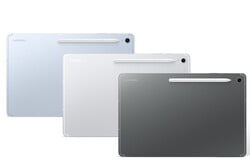
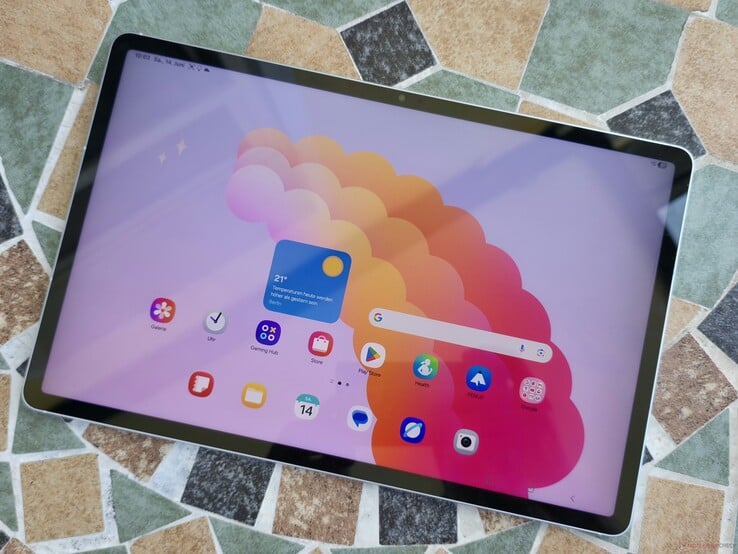




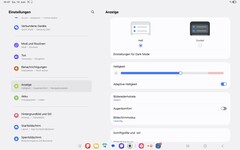





















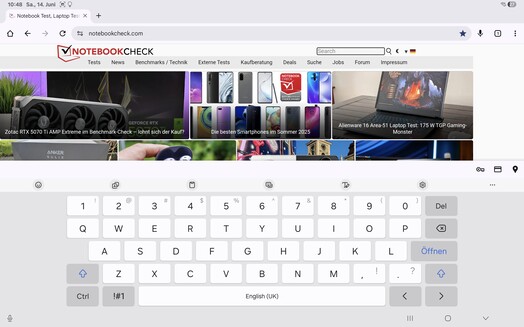
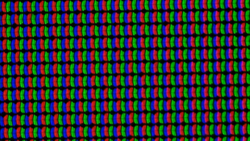
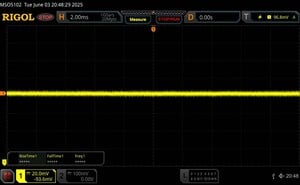
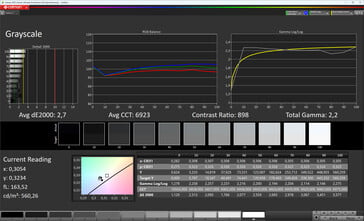
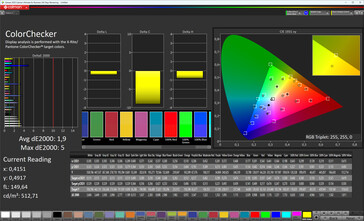
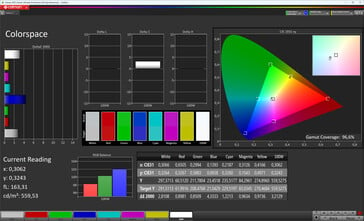
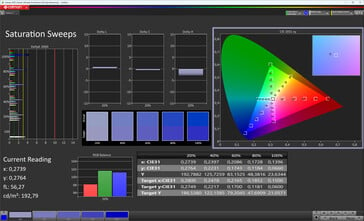
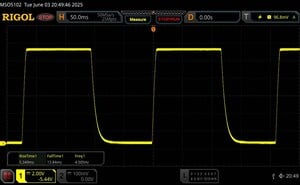
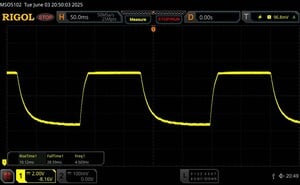
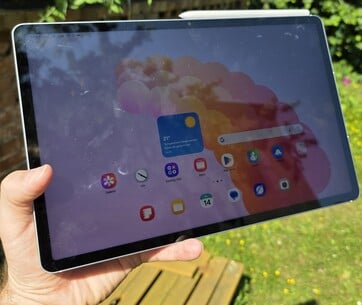
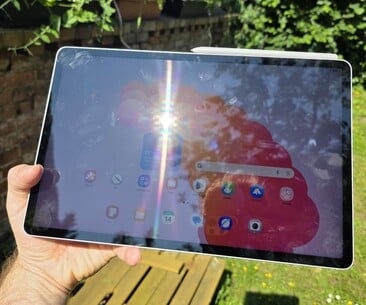


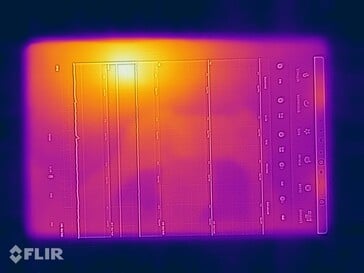

 Total Sustainability Score:
Total Sustainability Score: 



